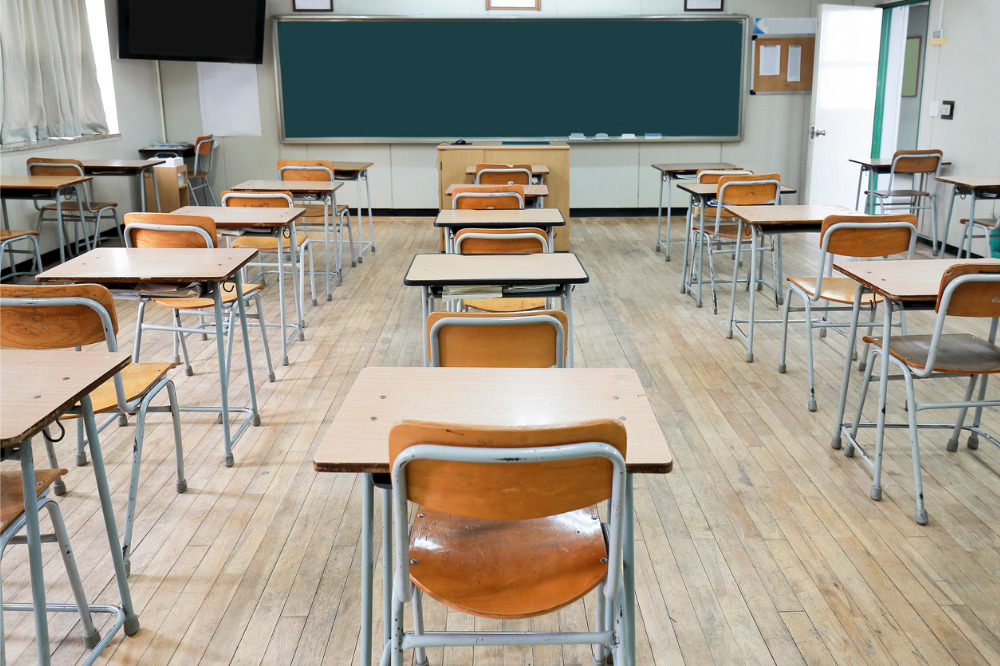
As the education sector continues to grapple with the various challenges posed by the COVID-19 pandemic, and lockdown, an important question has been swirling in the minds of educators and students alike.
What will teaching and learning look like when everything returns to “normal”?
One critical factor that is top of mind as schools make preparations to resume face-to-face classes is the safety and wellbeing of students and staff – something that has always been a priority for schools, but which has become even more important in light of the global pandemic that has so far killed 190,000 people worldwide.
There have been discussions as to whether the physical appearance of classrooms and other learning spaces might need to be adjusted in order to reduce the likelihood of further transmissions of the virus between children and adults.
Portable Partitions, a company that has been helping schools provide safe and versatile learning environments, recently began manufacturing Perspex screens for added safety during the COVID-19 pandemic,
Below, The Educator speaks to the company’s general manager Tony Haydar and managing director David Silverton to find out more.
TE: Back in 2015, Tony Haydar noted the growing demand for flexible learning spaces. What does the level of demand look like today in 2020?
The need for flexible space has only become greater in the past five years. We have a growing population with diversifying space requirements and schools are typically at or beyond capacity. With budgets often as constrained as the classroom space, the ideal situation is to use the same floor space for multiple purposes. While open-plan learning environments were a huge trend for years, we’re finding more schools looking for ways to break up these spaces because they are finding children get too easily distracted when there is no structure at all.
TE: In what ways do you envisage the COVID-19 pandemic might disrupt and/or transform what Australian classrooms look like, and why?
2020 has been a year of upheaval for children across Australia, from the bushfires and floods affecting rural schools, to COVID-19 quarantines forcing students across the country to learn from home. We’re lucky that technology is enabling a lot of learning to be done online. However, what is becoming very clear is that it is no substitute for in-person learning. With schools set to reopen soon, educators are facing a new challenge of how to keep learning spaces safe for students and staff. The real challenge will be to build trust with parents. While many are over home-schooling and having everyone stuck at home, many will be wary about letting their children back into an environment where they could be vulnerable to getting ill. School leaders across the country are implementing everything from; temperature checks, smaller classes to physically separating teachers.
TE: In March, Portable Partitions began manufacturing Perspex screens. Can you tell us what this means for the company's offerings for schools?
The education sector has always been one of our largest markets, and when COVID-19 hit, we reached out to our customers to understand how we could help them. In the past, our panels have been used as movable visual and acoustic barriers that enable flexible learning environments and it seemed obvious to adapt our products using clear acrylic they could be used for temperature checks. The acrylic is non-porous and washable and allows 100% vision. It is easily configurable to any space, anyone can set it up, it’s lightweight and durable. The idea actually came from us working with Amazon who were looking at extra ways to protect staff both on their famous door desks and to increase the screening protocol as staff come back to work with protective booths. Because we already had the technology and expertise, we were able to manufacture it in-house and despatched it to them the next day. They are now rolling it out across various states. We now have the school temperature booths in 3, 5, 7, and 9 panels exactly like our mobile room dividers. We are also conscious that schools may not need to temperature check panels for the long-term so we’ve made them fully transformable into our traditional fabric panels (with panel inserts) so that the schools get lifetime value for a product they have always embraced beyond the uncertainty of today.
TE: How will Portable Partitions be building on its offerings for K-12 schools in the year ahead? Are there any exciting developments on the horizon?
We are a customer-centric business so we’re constantly talking to the industry to make sure we’re creating innovative products that are aligned with the latest educational needs. Idea boards and walls for schools and offices are now recognised as a more collaborative way of collating ideas. Our partitions are pinboard and whiteboard finishes so that teachers can design their own walls. Data walls were the hero product for last year and will no doubt keep growing. Our hanging art displays are now available on all our partition products which allow for gallery hanging systems for art displays. Also, our operable walls allow for full height room division without building works and still allow for pinboard and whiteboard finish. As for the next product, that will be up to the next teacher who has a great idea they would like us to workshop with them.
For more information please visit www.portablepartitions.com.au/


